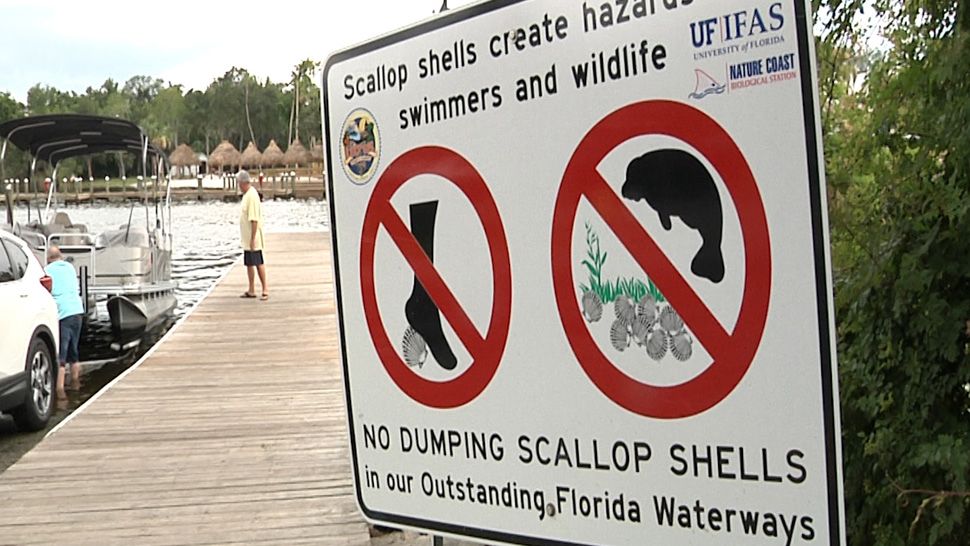With scallop season is underway in Citrus and Hernando Counties, a group in Homosassa is encouraging scallopers not to dump the shells in the river, saying it's harmful.
However, some locals don't think that's the case.
- Thousands flock to Homosassa River each year for season
- Homosassa River Alliance out to educate on harm shells can do
- Shells could threaten native river grasses, reducing oxygen
Thousands of people flock to the Homosassa River this time of year to bring in their share of scallops, meaning thousands upon thousands of shells are left over.
For years, many of those shells ended up in the river. But now the Homosassa River Alliance is working to educate people on the harm the shells can do by posting dozens of signs all across the area.
"We're covering the bottom completely with scallop shells," Frank Koposci with the Homosassa River Alliance said. "No sun can get to the bottom of the river, no native grasses can grow. With no native grasses, we lack oxygen coming into the river, oxygen supports the fish and the wildlife and so forth."
Koposci said 10 gallons of scallop shells, which is the maximum one boat can take out, would cover about 12 square feet of space on the riverbed.
That means hundreds of thousands of square feet of riverbed would be covered if every boat dumped their shells in the river.
"Dump the shells back into the open gulf waters, or further downriver away from the head springs of a river," Koposci said. "But also collect the shells, put them in a trash bag and put them in your dumpsters or put them in your garbage."
While some lifelong residents of the area agree there shouldn't be any shells near the springs, they don't see a problem dumping the shells in other parts of the river.
"We've seen fish make beds out of the shells since they've been thrown in there," said James Huggins of "Local Boyz." "It's more pollution than it is scallop shells. Scallop shells ain't going to hurt the river."
Currently there is no state law prohibiting people from throwing scallop shells in the river.



